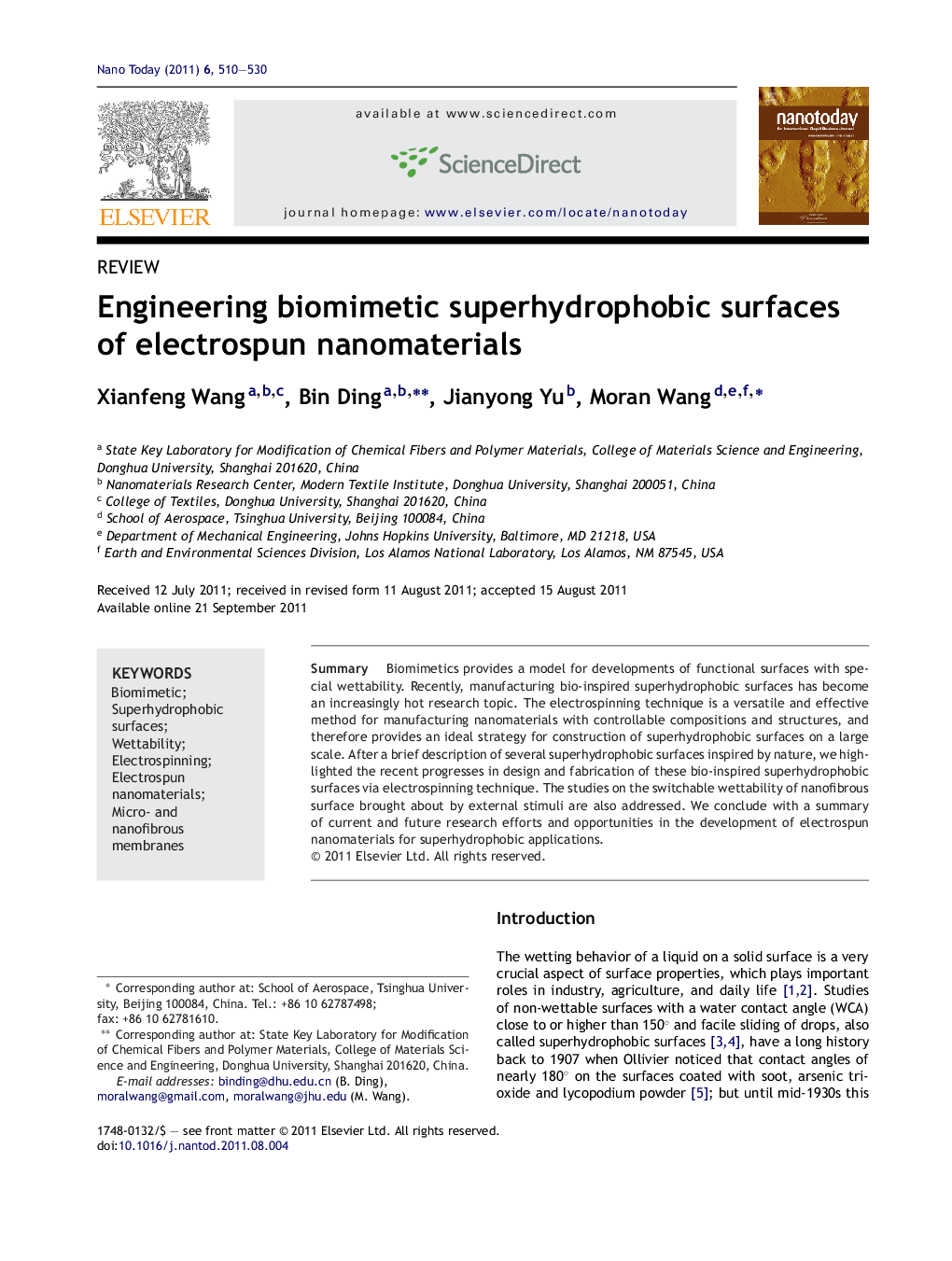| Article ID | Journal | Published Year | Pages | File Type |
|---|---|---|---|---|
| 32213 | Nano Today | 2011 | 21 Pages |
SummaryBiomimetics provides a model for developments of functional surfaces with special wettability. Recently, manufacturing bio-inspired superhydrophobic surfaces has become an increasingly hot research topic. The electrospinning technique is a versatile and effective method for manufacturing nanomaterials with controllable compositions and structures, and therefore provides an ideal strategy for construction of superhydrophobic surfaces on a large scale. After a brief description of several superhydrophobic surfaces inspired by nature, we highlighted the recent progresses in design and fabrication of these bio-inspired superhydrophobic surfaces via electrospinning technique. The studies on the switchable wettability of nanofibrous surface brought about by external stimuli are also addressed. We conclude with a summary of current and future research efforts and opportunities in the development of electrospun nanomaterials for superhydrophobic applications.
Graphical abstractFigure optionsDownload full-size imageDownload high-quality image (246 K)Download as PowerPoint slideHighlights► Electrospun superhydrophobic structures inspired by nature were highlighted. ► Surface modification of electrospun nanofibers could introduce rough structure as well as low surface energy materials on pre-formed fibrous surfaces. ► Roughening hydrophobic materials through electrospinning provides a one-step strategy to prepare superhydrophobic surfaces. ► Current research on the reversibly switchable wettability of fibrous surface is briefly addressed. ► Future challenges and perspectives of the development of superhydrophobic micro- and nanofibrous surfaces are concluded.
